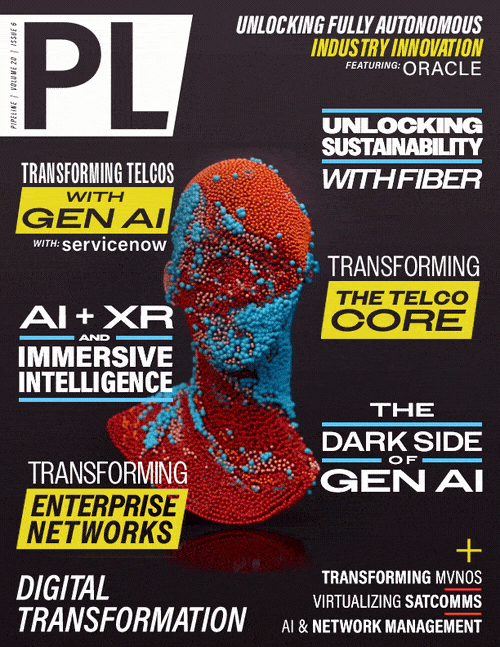The Role of the Network in
Digital Transformation
By: Mike Frane
 Digital transformation is commonly conceived as the digitalization of business processes and customer interactions with little regard given to the foundation of what is arguably the most critical
component of digital transformation projects – the network. Often how the network is designed and managed can make or break a successful digital transformation.
Digital transformation is commonly conceived as the digitalization of business processes and customer interactions with little regard given to the foundation of what is arguably the most critical
component of digital transformation projects – the network. Often how the network is designed and managed can make or break a successful digital transformation.
The good news is that perception is now changing. Enterprises are starting to understand the fundamental role of the network and are taking preemptive measures to ensure the network supports a smooth and successful digital transformation by collaborating with experts in the space, such as managed network solutions providers.
To clarify, a digital transformation is when an enterprise migrates data and applications to the cloud, through SaaS, or public, private, or hybrid cloud, establishing a modernized technology
environment that takes advantage of the benefits of cloud platforms.
Because enterprises focus so much on “the cloud” or SaaS, they don’t always think through how their operational flows need to change to also take into consideration other aspects of the network demands such as premises-based operations of the network or remote access and support. As digital transformation drives more cloud and SaaS needs, there are cost effective means of scaling and resiliency, such as using fiber, broadband and cellular combined with SD-WAN to optimize the application performance. The introduction of more cost-effective Internet access and remote users drives the need to re-evaluate the security envelope in which managed network security and the Security Service Edge (SSE) components of SASE play a huge role. Large enterprises would like to adopt a best-in-class model for the elements of the SASE framework. So it’s important to identify technologies that work well together and to choose a good managed service provider to ensure optimal performance and reliability.
About Promptlink - www.promptlink.com
Promptlink Communications is an industry innovator in network noise detection and CPE testing, with 15 patents demonstrating the innovation and breakthrough technology Promptlink
has developed. One key innovation has led to solving the puzzle of localizing and repairing ingress and other types of HFC noise and impairments. Machine learning and a huge library
of labeled data is used to identify the type of noise or other impairment and sends the specific location directly to a technician, with no analysis required. Promptlink’s Network
NoiseHawkAI provides a fully-automated solution for localizing, diagnosing and repairing Upstream Noise and other impairments. NoiseHawkAI automatically localizes a point in your
network, provides instructions to find and fix the issue, and validates the fix. All steps are fully automated, using the latest AI technology to send all info straight to a
smartphone. Promptlink's patented and award-winning solution is one-of-a-kind. This is only one of many unique solutions provided by Promptlink.
Solution Options for SASE
Small- and mid-size enterprises are more likely to choose a single vendor solution for SASE. In that respect, using a managed service provider to review the options available is crucial because not all technologies are created equal. It’s also important to understand that SASE has been defined as a “framework” rather than an architecture, combining SD-WAN with security technologies and bringing them together into a cloud service.
For example, some solutions come from the SD-WAN/networking side and have integrated security. SD-WAN has played a pivotal role in enabling the global digital transformation of organizations. At first, it simply provided a more flexible way for branch offices to connect to cloud-based applications. But as networks continued to evolve, SD-WAN became essential, providing fast and secure access between clouds and data centers. SASE solutions working in a SD-WAN environment became the




















